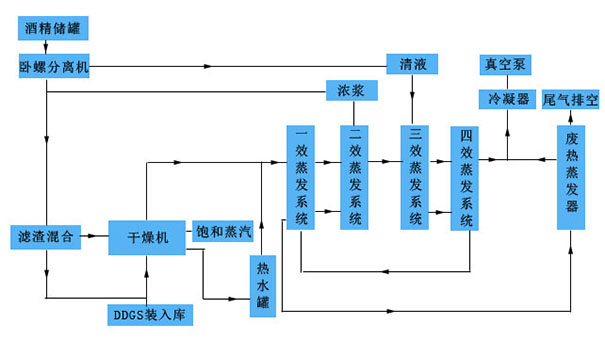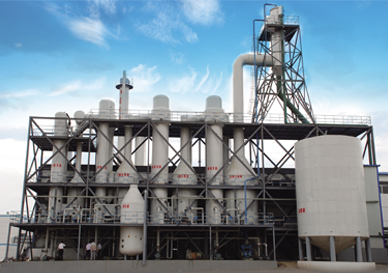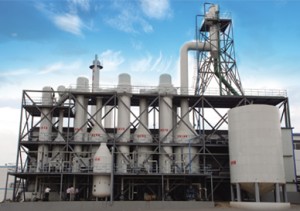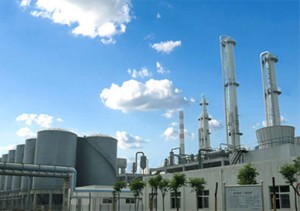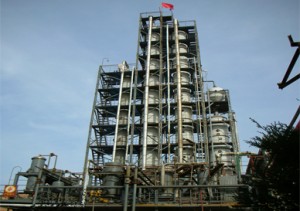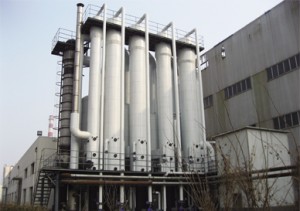Waste water containing salt evaporation crystallization process
Overview
For the characteristics of "high salt content" of waste liquid produced in cellulose, salt chemical industry and coal chemical industry, the three-effect forced circulation evaporation system is used to concentrate and crystallize, and the supersaturated crystal slurry is sent to the separator to obtain crystal salt. After separation, the mother liquor returns to the system to continue. Circulating concentration.
The device is controlled by automatic program. Evaporation tons of wastewater consumes 0.3 to 0.35 tons of steam.
Second, the process flow chart:
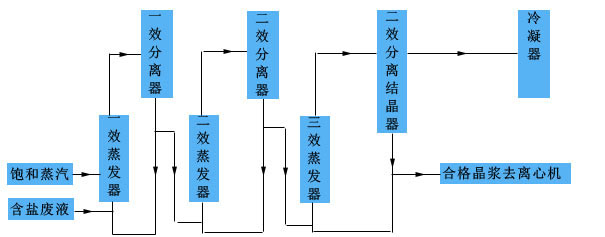
Waste steam evaporation device using secondary steam treatment of dryer
1. Utility model patent number
Second, an overview
Adopting "four-effect, falling film, and pressure-reducing" evaporation system, the falling film evaporator adopts the patent technology of "three-level film", using the secondary steam of steam dryer and steam condensed water as the heat source, and setting the waste heat evaporator to dry again. Machine waste steam, the waste clear liquid is concentrated and evaporated, the thick slurry is sent to the dryer, and the condensed water is evaporated to the water treatment plant.
The device is controlled by automatic program. The evaporation system does not need to replenish steam once.
Third, the process flow chart:
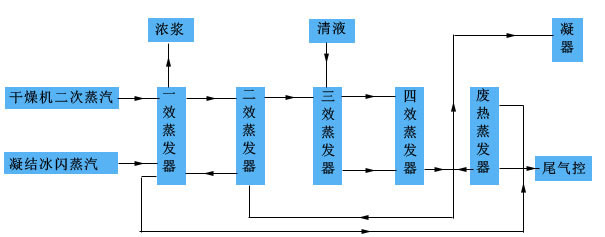
DDGS complete set
First, the patent number
National invention patent
Second, an overview
The distillers grains are produced by a full drying process, that is, dried distillers grains containing soluble solids are called DDGS (Distillers Dried Grains with Solubles).
The device uses mechanical separation, steam drying, waste heat evaporation and weighing and packaging four units to turn waste materials that are seriously polluting the environment into treasures, and obtain high-protein feeds that are easy to store, easy to transport, and nutritious. It solves the environmental problems that restrict the development of enterprises, and at the same time brings considerable economic benefits. The device is controlled by automatic program.
Third, the process flow chart
